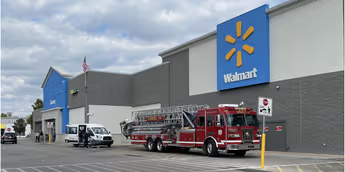Costliest Province for grocery shopping in South Africa revealed

A South African grocery store. Photo Credit- Bloomberg
South African consumers are feeling the pinch at supermarket checkouts, with grocery prices varying dramatically depending on where you live. A new report shines a light on the provinces where your weekly shop could set you back the most, highlighting stark regional disparities in the cost of essentials like bread, milk, and meat.
According to the latest data from the Consumer Price Index (CPI) and market analysis, the Western Cape emerges as the priciest province for buying groceries. Families here face an average monthly grocery bill that’s up to 15% higher than in more affordable regions, driven by higher transportation costs, import dependencies, and urban premiums in cities like Cape Town.
The analysis, based on basket-of-goods pricing from major retailers such as Pick n Pay, Woolworths, and Checkers, tracks the cost of a standard household grocery basket containing staples like maize meal, rice, vegetables, dairy, and proteins. This basket, designed to feed a family of four for a week, totals R1,200 on average nationwide, but expands significantly in certain areas.Provincial Breakdown: Where groceries hurt the pocket mostHere’s how the provinces stack up in terms of average weekly grocery costs for that benchmark basket (figures in ZAR, updated for Q3 2025).

These figures reflect a 6.2% year-on-year inflation in food prices across the country, with vegetables and dairy seeing the sharpest rises at 8.1% and 7.4%, respectively. In the Western Cape, a loaf of brown bread costs R22.50, nearly 20% more than the R18.90 national average, while a litre of full-cream milk hits R25.80 compared to R21.50 elsewhere.
Why the Western Cape tops the list
The Mother City’s status as a tourism and export hub plays a big role. “Fresh produce in the Western Cape commands premium prices due to its role in global supply chains,” notes economist Dr. Lindiwe Nkosi from the University of Stellenbosch. “What benefits exporters trickles down as higher costs for locals.” Additionally, water scarcity and climate impacts have nudged up prices for water-intensive crops like tomatoes and lettuce by 12% in the past quarter.Gauteng, home to Johannesburg and Pretoria, isn’t far behind, with congestion and high rental costs for stores inflating prices. In contrast, inland provinces like the Free State benefit from direct farm-to-table access, keeping costs down.
Broader implications for South African shoppers
This provincial divide exacerbates inequality, as lower-income households in expensive areas spend up to 25% of their budget on food alone, well above the recommended 10-15%. The report calls for targeted interventions, such as subsidized transport for rural produce distribution, to even the playing field. As inflation lingers, savvy shoppers are turning to bulk buying, local markets, and loyalty programs to stretch their rands. Comparing provinces isn’t just academic, it’s a roadmap for where to relocate or shop strategically.
For the full dataset and methodology, visit the Statistics South Africa portal. With grocery costs on the rise, keeping an eye on these trends could save you hundreds annually.




